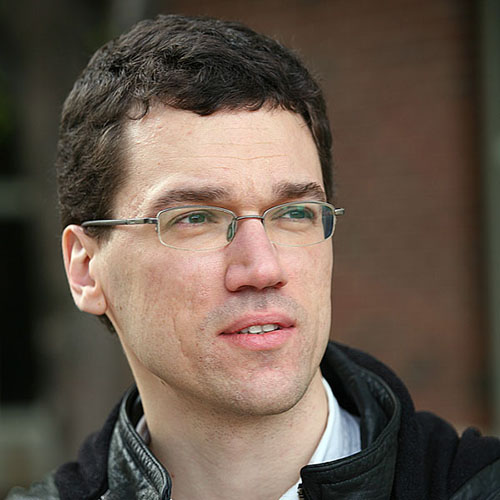
- This event has passed.
Physical Chemistry Seminar Series: Taras Pogorelov (University of Illinois)
September 13, 2022 | 3:45 pm - 4:30 pm

About the Speaker:
Biography:
Professor Pogorelov received a Diploma in Biomedical Engineering from Bauman Moscow State Technical University in 1995, an M.S. in Mathematics in 1996, and a Ph.D. in Chemical Physics in 2006 (with Zan Luthey-Schulten), both from the University of Illinois at Urbana-Champaign. From 2006 to 2009 he was a postdoctoral research associate in Chemistry Department (with Todd Martinez) and from 2009 to 2012 he was a postdoctoral research associate at the Beckman Institute (with Emad Tajkhorshid) and a Research Scientist at the School of Chemical Sciences. In 2012 he was appointed a Research Assistant Professor and a Senior Research Scientist in charge of scientific computing, where he advises and collaborates with the School’s researchers in the areas of advanced computational chemistry.
Research:
Physical Chemistry of Complex Cellular Environments
We are physicists, chemists, biologists, and computer scientists, who address pressing questions in molecular biology and physical chemistry of the cell signaling in health and disease. We develop computational methods and workflows by combining frameworks of molecular dynamics, quantum chemistry, and molecular evolution with multi-resolution experimental data. Current emphasis is on cell signaling, protein dynamics and interactions in complex environments, and functional lipids in membrane-associated phenomena.
About the Seminar:
Title:
Capturing Biomolecular Dynamics in the Cell: Making a Match Between Simulations and Experiments
Abstract:
The cell is a crowded space where macromolecules, metabolites, and ions are present in high concentrations. Structural functional dynamics of these molecules span orders of magnitude. Experimental techniques provide a wealth of information on various spatial and temporal scales. To resolve cellular events on the atomistic scale a close collaboration with computational methods is needed. Likewise, computational observations need to be validated by experiments. Here we present two research directions, united by the common theme of cell signaling in crowded environment, membrane-associated phenomena and in-cell protein dynamics and folding, where computation (molecular dynamics and quantum chemistry) and experiments (fluorescence and NMR spectroscopies) are used in synergy. With our novel highly mobile membrane mimetic (HMMM) model we address functional interactions of ions and peptides with fluid membranes. Calcium ions are important cellular messengers, spatially separated from anionic lipids. Upon cell injury, disease, or apoptotic events, anionic lipids are externalized to the outer leaflet of the plasma membrane and encounter calcium, resulting in dramatic changes in the plasma membrane structure and initiation of signaling cascades. We find that major structural characteristics of these modeled nanoclusters, including inter-lipid pair distances and chemical shifts, agree with measured NMR parameters. Modeling reveals that lipid-ion nanoclusters are shaped by two characteristic, long-lived lipid structures induced by divalent Ca2+. Using ab initio quantum mechanical calculations of chemical shifts on MD-captured lipid-ion complexes, we show that computationally observed conformations are validated by experimental NMR data.
While decades of research revealed a vast amount of information about dynamics of molecules in vitro, the investigation of in-cell environments is still in early stages, and many questions about the role of crowding remain to be answered. Here we employed a long (>225 μs) all-atom classical molecular dynamics simulation of a small volume of E. coli cytoplasm, containing a dozen of macromolecules (proteins and tRNA) and physiological concentrations of metabolites and ions, to reveal a dramatic influence of crowding and sticking. We discovered that transient nonfunctional protein-protein interactions have a very short half- life of ~1 μs, comparable to the time scale of the fastest protein folding, which hints at co-evolution to prevent sticking. For protein folding, a small fast-folding triple-stranded WW domain GTT protein was not able to fold completely in silico even at the timescales longer than its experimentally measured folding time. We captured folding of one of the two hairpins as GTT is being kinetically trapped in an intermediate state by non-specific protein-protein interactions. We hypothesize that sticking in crowded conditions, perhaps enhanced by the non-native mutations of GTT, is responsible. Finally, we contrasted the dynamic behavior of adenosine triphosphate, ATP, one of the most abundant metabolites in the cell, between the in-cell, crystallographic, and in-water environments. We observed formation of pitched ATP conformations in-cell in the vicinity of macromolecules and in-crystal, perhaps driven by functional needs. Interestingly, we also observed ATP populations unique to the crystal environment that are absent in-cell and in-water, which we attribute in part to the strained conformations induced by host proteins. Our work shows dramatic influence of cellular environment on dynamics of proteins and metabolites and will guide future theoretical and experimental investigations.